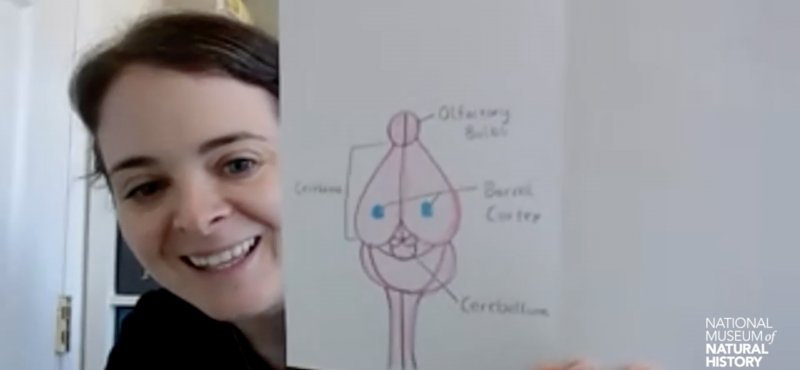When the pandemic forced one of the most famous museums in the world to shut its doors, the educators and curators had to find new ways to fulfill their mission to educate children and families. Thanks to innovation, hard work, and reliable broadband, Katie Derloshon, a museum educator for the Smithsonian National Museum of Natural History in Washington, DC, was able to connect with families around the world to keep the learning – and wonder – alive.
Skill, Practice, Create
When it became evident, in April 2020, that the Covid lockdown would not be temporary, Derloshon knew she would have to find a new way to harness the internet to maintain contact with the museum’s audience, and in particular, families.
“My boss asked us, ‘If you could do anything, what would you want to do?’” says Derloshon. “So everyone started brainstorming and coming up with ideas. Being virtual pushed us into a new realm where everything was new and experimental.”
Derloshon and her manager decided to build on an existing, popular museum program and make it virtual via a monthly webinar; thus, the “Natural History at Home” webinar was born. In each monthly program, a new skill would be modeled and practiced, followed by a craft activity using materials that can be found around the home. “We were trying to develop a pattern that would become a routine for each class,” Derloshon explains. “When we were scaffolding the program we landed on: ‘learn a skill, practice, and create – sometimes in that order or sometimes switched around a bit.” In a recent program on adaptation, for example, the skill was scientific observation and communication, the creation was for participants to draw and compare different animal brains, and the practice was to teach someone else about it.
Adapting to a New Medium
The monthly webinars are conducted on Zoom Webinar, and a typical session could host anywhere from 70 to more than 100 families. The educators also attempt to find a guest expert for each program, which has created interesting challenges with regard to coordinating schedules and supporting guests with technology.
The key, says Derloshon, is to adapt learning to a different medium. “You can’t just take something you used to do in the museum and replicate that in an online environment,” she notes. “Object-based learning can be very different online than in-person, when you have an actual object in your hand that the families and learners can touch or experience. Online is a very different way of engaging people. There are positives and negatives to both.” On a personal level, she adds, the program has led her to develop new skillsets – such as drawing on-camera.
Going Global
One of the biggest benefits of going virtual has been the vast expansion of the education program’s reach. Pre-pandemic, hosting classes from a physical location meant that the museum was primarily reaching local audiences and the tourists who had the means to travel to Washington, DC. But teaching programs online has allowed the museum to reach families from around the entire world. Despite the program’s success, though, “we don’t know if we’ll have the capacity to keep the online program going when we reopen,” says Derloshon. “But we have a dedicated following of families who are all over the country – and even global! We don’t want to lose them.” While she is very eager to resume in-person facilitation, ending the successful online program would be bittersweet.
One of the unknowns is whether the online patrons would still be committed, post-pandemic. “Last summer there was a huge desire from the audience to have online programs and interactions because nothing was open,” Derloshon says. “But now things are opening again and it’s hard to know if the audience desire will still be there. It all depends on how everything unfolds this summer.” No matter what happens, though, “Natural History at Home” will remain a testament to how museums and educational institutions can harness the internet not only to keep learning alive, but also to extend its reach to families for whom traveling to the capital of the U.S. is not possible.
The global pandemic has brought the connecting power of the internet to society’s forefront, helping to educate students and keep the economy running. To find out how you can participate in bringing supercharged broadband capable of supporting critical programs to every corner of the country, click here.
